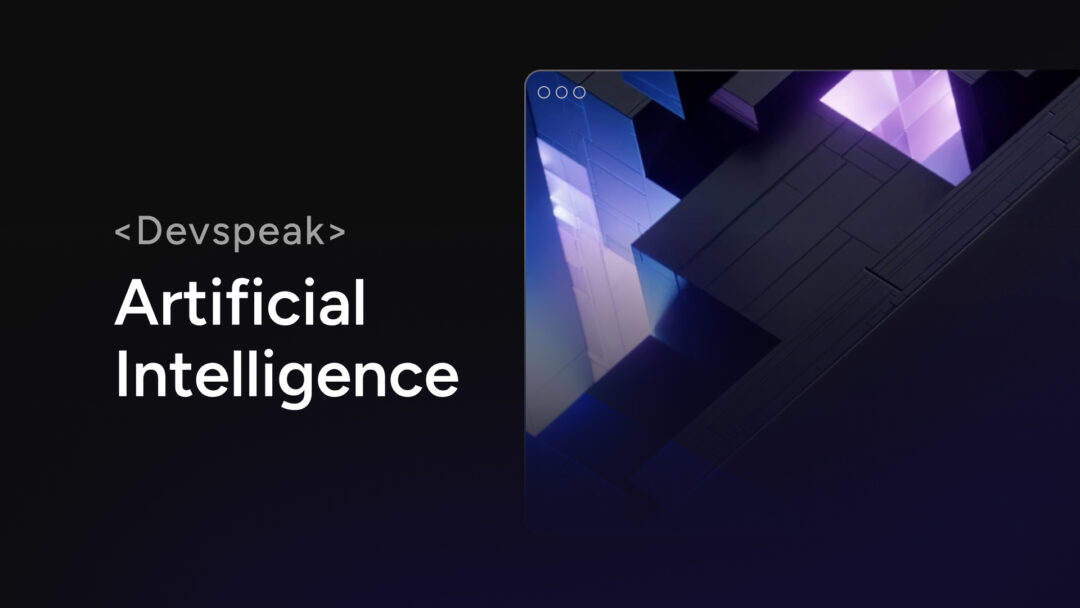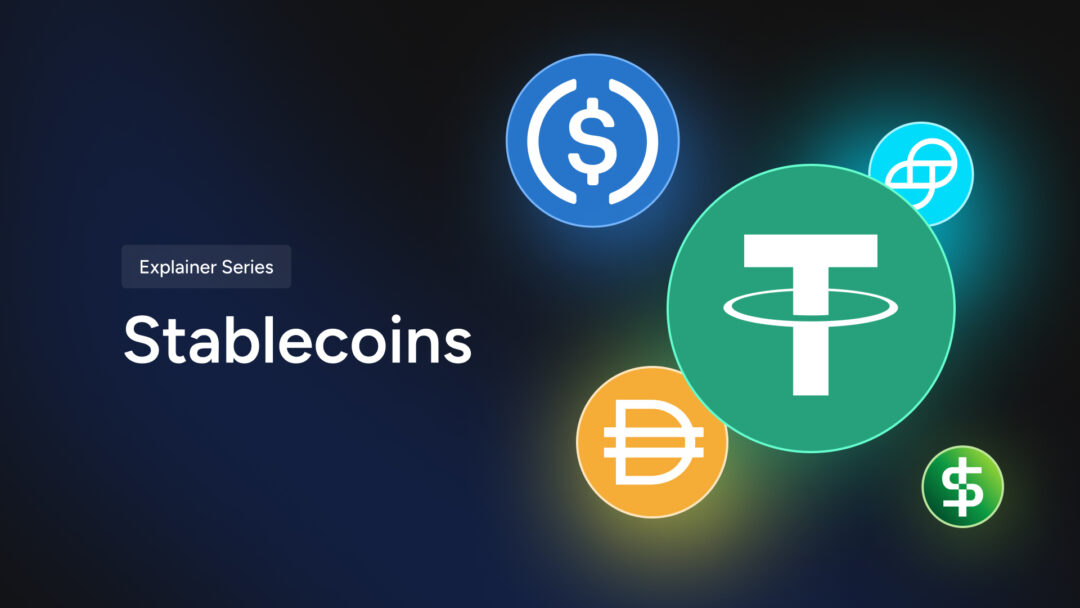
DevSpeak: Artificial Intelligence
Artificial Intelligence (AI) often sounds like something straight out of a science fiction movie—robots taking over the world or computers that think and act like humans. But the reality of AI is much different and far less scary. AI is already a significant part of our lives, helping us in ways we might not even realize.
Artificial Intelligence, Defined
At its core, Artificial Intelligence is simply the ability of a machine to perform tasks that would normally require human intelligence. These tasks can include things like understanding language, recognizing patterns and solving problems.
AI is just a tool designed to mimic certain aspects of human thinking or behavior. But it’s important to note that AI doesn’t have feelings, consciousness, or self-awareness. It’s just a set of algorithms—basically, step-by-step instructions for processing data and making decisions based on that data.
For example, when you use voice commands to ask your smartphone for the weather, AI is at work. It understands your question, searches for the information, and provides you with an answer—all in a matter of seconds. But it’s not “thinking” the way humans do; it’s following a programmed sequence of actions based on the input it receives from you… a thinking, creative human.
General vs. Narrow AI
Now that we know what AI is, it’s crucial to understand that there are two main types: General AI and Narrow AI.
Narrow AI
This is the type of AI we interact with daily. Narrow AI (often referred to as weak AI) is designed to perform a specific task or a set of related tasks. It’s very good at what it does, but it’s limited to that particular function. A facial recognition system can identify people in photos, but it can’t play chess or write a song.
These types of AI can seem deceptively intelligent, but that’s because it’s trained to be incredibly proficient at one thing. As humans, we tend to recognize someone who is really good at something as very capable. AI is not a human. Just because it’s impressively responsive as a chat bot doesn’t mean that it has real insight or understanding of anything it’s been trained on.
Search engine algorithms are a great example of this. Google seems like it knows everything about you sometimes. It places ads at the exact right time. Have you ever gotten an ad on YouTube for something that you were just thinking about but never voiced aloud? Spookily insightful, huh?
Only it’s not. Google’s algorithm has sampled terabytes of data on literally billions of people. It is excellent at seeing the patterns and knowing that if you searched for A and you purchased B, you’re likely going to think about C sometime in the next few days. This doesn’t mean it knows you, it just knows what humans are likely to do.
General AI
This is the kind of AI you see in movies — machines that can think, learn and apply knowledge across a wide range of tasks, just like a human. However, General AI (referred to as strong AI) doesn’t exist yet. While there’s some disagreement about how long, we’re still definitely a long way from creating a machine that can do everything a human can do.
To accomplish this, we’d need to make algorithms that can do everything the human brain can. The problem with that is that we don’t really understand how our brain does its thing entirely. Even if we can simulate the number of neurons and interconnections in a human brain (a BIG task), will that equate to learning, insight and creative thinking? Is a brain just a computer or something more is a question that science hasn’t come very close to answering.
Regarding GPT: Understanding Large Language Models
Let’s take a short digression to talk about one of the most ubiquitous forms of AI out there – the Large Language Model (LLM), used in programs such as GPT (Generative Pre-trained Transformer). Since these specialize in one of the cornerstones of civilization (communication), they’re easy to overestimate or misunderstand. After all, we typically see the ability to communicate well in humans as a sign of intelligence.
Large Language Models (LLMs) are a type of AI designed to understand and generate human-like text based on the input they receive. They are trained on vast amounts of text data, allowing them to learn patterns, grammar and even some aspects of reasoning. When you ask GPT a question or give it a prompt, it analyzes the input and generates a response that seems coherent and relevant, often mimicking human language quite convincingly.
How GPT Forms Responses
When you interact with GPT, you’re essentially giving it a prompt – a piece of text that it will use as a starting point to generate a response. GPT doesn’t “think” or “understand” the way humans do. Instead, it uses the patterns it has learned during training to predict what text is likely to come next based on the input it received.
If you ask GPT to write a story about a cat, it’ll use the knowledge it has about cats, stories and language structure to craft a response. The more detailed your prompt, the more focused and accurate its response will be. It isn’t actually composing a story… it’s just giving a response that sounds like something a human may say.
Limitations of LLMs
While LLMs like GPT are incredibly powerful, they have significant limitations:
- Lack of understanding: LLMs do not possess true understanding or consciousness. They generate text based on patterns, not on any deeper comprehension of the world. This means that while GPT can produce text that seems intelligent, it doesn’t actually “know” anything in the way humans do.
- Dependence on training data: LLMs are only as good as the data they’ve been trained on. If the data is biased or incomplete, the model’s responses may also be biased or inaccurate. Additionally, GPT cannot create entirely new knowledge; it only recombines and reinterprets what it has already been exposed to.
- Inability to think critically: GPT and other LLMs cannot critically evaluate or verify information. They can sometimes generate responses that are factually incorrect or nonsensical, particularly if the prompt is ambiguous or outside the model’s training scope.
You can train a parrot to respond to specific phrases with almost conversational quips… that doesn’t mean the parrot is carrying on a conversation with you. LLMs are similar to that in lots of ways. The AI is learning what responses to a prompt are likely to be appropriate based on the data it is fed. It’s complex, but it’s still just parroting the data it’s been given.
Apocalypse, Not
One of the biggest myths about AI is that it will eventually become so intelligent that it will take over the world, causing an “AI apocalypse.” This idea is more fiction than fact.
Remember, Narrow AI is designed to do specific tasks. It can’t suddenly decide to become something else. Your AI-powered vacuum cleaner isn’t going to start plotting world domination… it’s just going to keep cleaning your floors. Even if we one day develop General AI, the idea that it would turn against us is highly speculative and far from a present concern. It’s also likely that generations of sci fi writers have been assigning scary, but fundamentally human characteristics to a theoretical, inhuman system.
In reality, AI is just another tool. As people understand more of this, another alarmist point of view has become prevalent – the idea that AI will replace all of us. Again, this goes a little far. There are parts of life that AI has already made more efficient, but it’s just a tool.
The invention of the power drill didn’t replace carpenters. Often human expertise is still required to get the best work out of these AIs. Writing from GPT will feel choppy and generic if it’s not edited by an expert. Images generated by non-artists from Midjourney often still lack the composition and cohesion that an artistic eye with experience can bring.
You could give me (a writer) a powerful data aggregation algorithm, and I would be totally lost and would probably just waste time on it. To a data analyst, it can be a super power for tedious and mundane tasks that previously sucked their time dry. The expertise from a real human is still required to get the best work out of AI.
Human Intelligence Boosted
Hopefully this DevSpeak gives you a lot more insight into the very broad term “AI”, and how it affects your daily life. New tech and the jargon that comes with it is often confusing, but that’s why you have DevSpeak!
This one was a mouthful for sure! Thanks for sticking with us through this deep dive on an important topic. We’ll be back soon with more explainers designed to buff your understanding of the tech world!


